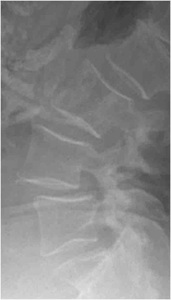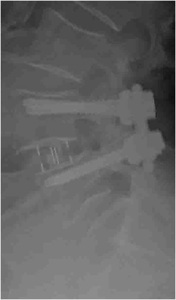Contact ☎ 310.448.7844
XLIF/DLIF
XLIF (Extreme Lateral Interbody Fusion) and DLIF (Direct Lateral Interbody Fusion) are the same lateral (from the side) approach to the spine. A fusion entails one vertebral body (ex. L4) fusing to another (ex. L5). This provides stability and decreases pain from the facet joints and disc (ex. L4-5) in between the vertebral bodies. The lateral fusion (XLIF/DLIF) has the benefit of obtaining excellent fusion potential through a minimally invasive approach. The disc is removed and replaced with a large spacer (typically plastic) and bone graft (or substitute such as BMP). The size of the spacers inserted thru the lateral approach is typically twice the size of spacers inserted from the back (TLIF or PLIF approach). The larger spacers provide increased stability, increase the disc height in order to restore alignment, and increase the chance of successful fusion. Pedicle screws, which may be used for additional stability, are inserted into the bone in order to stabilize the motion segment (ex. L4-5) and increase fusion rate. We insert our pedicle screws under three-dimensional computer navigation which increase the accuracy and safety of the procedure. Ninety-five percent of our patients have had pain reduction with a XLIF/DLIF procedure with an average pain reduction from 9/10 preop to 4/10 postop.
XLIF/DLIF Procedure
Case Study
Here is an example of a patient who underwent a DLIF procedure. In her late eighties, she suffered with back and bilateral leg pain for many years. She was unable to stand for 5 minutes due to pain. She had a spondylolisthesis at L4-L5 that was treated with DLIF, pedicle screws, and decompression. At last follow-up 2 years after the surgery, the patient was able to stand for 20-30 minutes and her pain was reduced to half of the pre-op level.
LATERAL LUMBAR FUSION (XLIF/DLIF)
For a description of the ALIF, please click here
For a description of the XLIF/DLIF, please click here
For a description of the TLIF, please click here
For a description of the PLIF, please click here
We prefer a TLIF to a PLIF because we think it requires less nerve root retraction and is safer for the patient. They are very similar procedures, both done from the back.


